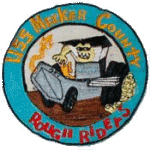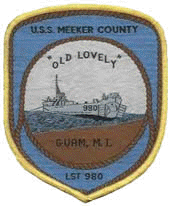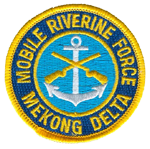LST-980 was laid down at the Boston Naval Shipyard, Boston, Mass., 9 December 1943; launched 27 January 1944; sponsored by Miss Imelda M. Munzing; and commissioned 26 February 1944, Lt. W. F. Westfall in command.
In April 1944, after completing shakedown exercises in Chesapeake Bay, LST-980 loaded equipment and got underway for England, where plans for the invasion of France had been stalled in debate over the need for shipping, a need and resultant disagreement so acute that Prime Minister Churchill had quipped, “The destinies of two great empires . . . seem to be tied up in some — things called LSTs.”
Upon arriving in England, LST-980 underwent further amphibious training and by early June stood ready for D-Day. On 5 June, the ships of operation “Overlord” sortied from the English coast and on 6 June the Allies landed on the Normandy beaches. Participating in the invasion, LST-980 was bracketed by bombs, one of which, a 125-pound dud, penetrated the hull and two bulkheads, killing one man and causing minor damage. After the establishment of the beachhead, the landing ship remained in the area providing shuttle service between the United Kingdom and France. Carrying men and equipment to France, she returned to England with prisoners of war, transporting upwards of 900 at one time.
LST-980 returned to the United States in February 1945, and was assigned to training activities along the east coast for the remainder of the war. Following the war, she remained at Little Creek, Va., and continued her training operations, extending them to the Caribbean and the Gulf of Mexico. Those included participation in CAMID I, II, and III, Joint Army-Navy operations to acquaint Academy cadets and midshipmen with amphibious warfare.
On 30 April 1949, LST-980 departed Little Creek for the Mediterranean and 5 months’ duty with the 6th Fleet. Returning to her base 4 October, she resumed east coast operations. With only three interruptions, two resupply missions to the Baffin Bay area in the summers of 1951 and 1952, and a 2-month tour as support LST for marines on Vieques Island in 1954, she continued to provide amphibious training to Naval and Marine Corps personnel until July 1955. Renamed USS Meeker County (LST-980) on 1 July 1955, she steamed to New York in mid-July to begin inactivation. On 23 September, she arrived at Green Cove Springs to complete the process. Decommissioning 16 December 1955, she remained in the Florida Group, Atlantic Reserve Fleet, until transferred to Philadelphia in October 1961.
In 1965 an urgent need for amphibious types caused Meeker County to be reactivated. Modernized at Baltimore, she recommissioned 23 September 1966, underwent intensive training at Little Creek, and 20 January 1967 departed for her new home port, Guam. She arrived at Apra 7 April and then sailed for Vietnam for a tour of duty as a unit of Landing Ship Squadron 3. Operating from Da Nang, she has provided almost continuous support to combat operations in Vietnam into 1969.
LST-980 received one battle star for World War II service.
[Stricken from the Naval Vessel Register on 1 April 1975, former Meeker County was disposed of on 1 December 1975.]
Awards earned during the Vietnam War: Combat Action Ribbon, Navy Unit Commendations, Meritorious Unit Commendation, RVN Gallantry Cross with Palm, RVN Campaign Medal with 60’s device and the Vietnam Service Medal with (10) Battle Stars.
Interesting information on the USS Meeker County submitted by Tony Zegenhagen of Australia: Click HERE



